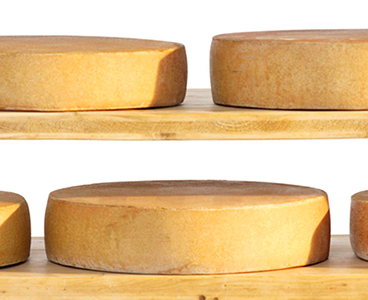Proper storage
Proper storage helps you get the most enjoyment out of your cheese.
Cheese is a living, natural product – and a sensitive one, since it is constantly maturing. The key is mainly the temperature: if it’s too warm, the cheese matures too quickly, and if it’s too cold, the aroma suffers.

Did you know that
a bit less than half the fat in dry matter (FDM) is the actual (absolute) fat content?
Storing cheese properly
To keep cheese fresh and aromatic for as long as possible at home, the best place to store it for a while is in a spot with a steady, cool temperature (8–12 °C) – in the basement, a pantry or in the refrigerator. If it’s too warm, the cheese begins to sweat and can dry out. In your fridge, cheese generally does best in the warmest spot – at the bottom of the vegetable drawer, in the door or at the front of the top shelf.
Remember: cream cheese should always be kept in the cooler part of the fridge.
General pointers for storing cheese:
- Soft and cream cheese: always keep in the original packaging; cover cut faces with aluminium foil or plastic wrap
- Semi-hard and hard cheese: store in breathable food wrap
- Blue cheese: store in aluminium foil or the original packaging
- To keep cheese fresh and aromatic for as long as possible, the best place to store it is in a spot with a steady, cool temperature: between 8 and 12 °C is best. When the temperature is too high, the cheese begins to sweat and dries out. In the fridge, it generally does best in the warmest spots – such as at the front of the top shelf. But remember: always keep cream cheese in the cooler part of the refrigerator.
- Turn cheese in the fridge every day; that way, it doesn’t dry out on the top because the whey is distributed evenly.
BBD = best-before date
Note the best-before date (BBD) – the closer it is, the greater your assurance that you are buying optimally stored cheese that is fully mature. For many people, cheese is best enjoyed after its best-before date.



